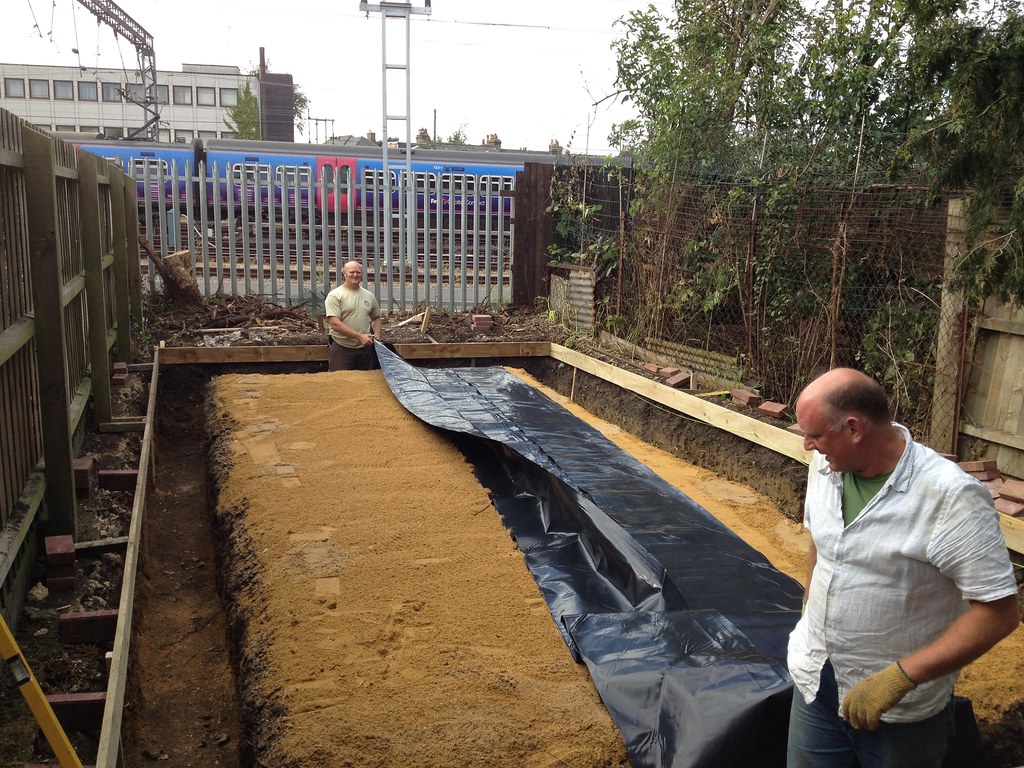Comprehensive Guide to EVA/LLDPE Waterproofing Membranes

EVA (Ethylene Vinyl Acetate) and LLDPE (Linear Low-Density Polyethylene) waterproofing membrane are essential materials used in construction and infrastructure projects to prevent water leakage and ensure durability. These membranes are highly valued for their flexibility, durability, and resistance to environmental stressors. In this blog, we will explore the key characteristics, applications, and benefits of EVA/LLDPE waterproofing membrane, along with insights into their installation and maintenance.
What Are EVA/LLDPE Waterproofing Membranes?
EVA and LLDPE waterproofing membranes are synthetic liners designed to provide an impermeable barrier against water. These materials are commonly used in a variety of construction and industrial projects, ranging from roofs and basements to tunnels and reservoirs.
Key Features:
- EVA Membranes: Known for their flexibility and resilience, EVA membranes combine ethylene and vinyl acetate, making them highly elastic and crack-resistant.
- LLDPE Membranes: Made from linear low-density polyethylene, LLDPE membranes are lightweight, robust, and provide exceptional resistance to punctures and tears.
Applications of EVA/LLDPE Waterproofing Membranes
Due to their versatility, EVA and LLDPE membranes are employed in various sectors. Here are some of their common applications:
1. Roofing Systems
EVA/LLDPE membranes are widely used in flat and sloped roofing systems. Their waterproofing properties ensure protection against rain, snow, and other weather conditions.
2. Underground Structures
For basements, foundations, and underground parking lots, these membranes prevent water seepage, ensuring structural integrity.
3. Tunnels and Subways
In transportation infrastructure, waterproofing membranes act as a barrier against groundwater, enhancing the lifespan of tunnels and subway systems.
4. Reservoirs and Tanks
EVA/LLDPE membranes line reservoirs, water tanks, and irrigation systems to prevent water loss and contamination.
5. Waste Management
In landfills and hazardous waste containment, these membranes provide an impermeable barrier to prevent leachate migration.
6. Bridges and Highways
Waterproofing membranes protect bridges and highways from water-induced erosion and structural damage.
Benefits of EVA/LLDPE Waterproofing Membranes
The popularity of EVA/LLDPE membranes stems from their exceptional properties. Below are the primary benefits:
1. Durability
Both EVA and LLDPE membranes offer excellent resistance to environmental stressors, including UV radiation, chemicals, and extreme temperatures.
2. Flexibility
These membranes are highly elastic, allowing them to adapt to structural movements without cracking or tearing.
3. Lightweight
Their lightweight nature facilitates easy transportation and installation, reducing overall project costs.
4. Cost-Effective
Compared to other waterproofing materials, EVA/LLDPE membranes are economical while delivering long-lasting performance.
5. Chemical Resistance
EVA and LLDPE membranes resist chemical degradation, making them suitable for industrial and waste management applications.
6. Eco-Friendly
These materials are recyclable, contributing to sustainable construction practices.
Comparing EVA and LLDPE Waterproofing Membrane
While both EVA and LLDPE membranes are highly effective, they have unique characteristics suited for different applications.
| Property | EVA Membranes | LLDPE Membranes |
|---|---|---|
| Flexibility | High | Moderate |
| Tear Resistance | Moderate | High |
| Cost | Higher | Lower |
| Chemical Resistance | Moderate | High |
| UV Resistance | High | Moderate |
Installation Process for EVA/LLDPE Waterproofing Membrane
Proper installation is critical to the effectiveness of EVA and LLDPE membranes. Below is a step-by-step guide to the installation process:
1. Surface Preparation
- Clean the surface thoroughly to remove dust, debris, and sharp objects.
- Ensure the surface is smooth and dry for optimal adhesion.
2. Material Selection
- Choose the appropriate membrane type and thickness based on the project requirements.
3. Unrolling the Membrane
- Carefully unroll the membrane over the surface, ensuring it is free of wrinkles.
4. Seaming
- Overlap the edges of the membrane by a few inches.
- Weld the seams using heat or adhesive to create a watertight seal.
5. Anchoring
- Secure the membrane edges using mechanical fasteners, adhesive, or anchor trenches.
6. Inspection and Testing
- Inspect the membrane for any defects, punctures, or improper seams.
- Conduct water tests to verify the membrane’s performance.
Maintenance Tips for EVA/LLDPE Waterproofing Membranes
Regular maintenance is essential to ensure the longevity and performance of waterproofing membrane. Here are some tips:
1. Routine Inspections
Inspect the membrane periodically for signs of wear, punctures, or detachment.
2. Cleaning
Remove debris, dirt, and standing water to prevent damage.
3. Repairing Damages
Use appropriate repair kits to patch punctures or tears. Ensure that the repaired sections are properly sealed.
4. Monitoring Systems
For critical applications like tunnels and reservoirs, consider using leak detection systems.
Innovations in EVA/LLDPE Waterproofing Membrane
Advancements in material science continue to enhance the performance of EVA and LLDPE membranes. Emerging trends include:
1. Enhanced UV Resistance
New formulations are improving the UV stability of these membranes, making them even more suitable for outdoor applications.
2. Reinforced Membranes
Innovative designs incorporate reinforcement layers for added strength and tear resistance.
3. Smart Membranes
Integration with sensors for real-time monitoring is gaining traction, enabling immediate detection of leaks or damage.
Choosing the Right Waterproofing Membrane
Selecting between EVA and LLDPE membranes depends on the project’s specific requirements. Key factors to consider include:
- Budget: LLDPE membranes are generally more cost-effective for large scale projects.
- Application: EVA membranes are better for applications requiring high flexibility, such as roofs and basements.
- Environmental Conditions: LLDPE membranes are ideal for environments with high chemical exposure.
Conclusion
EVA/LLDPE waterproofing membrane are indispensable in modern construction and infrastructure projects. Their ability to provide a durable and impermeable barrier against water makes them a reliable choice for diverse applications. By understanding their features, benefits, and installation practices, project managers and engineers can ensure long-lasting and efficient waterproofing solutions.
